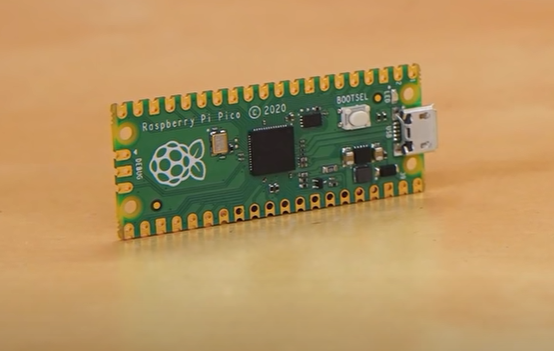
The Raspberry Pi Pico is a change from the previous Pis that people are used to. This is because it is not a Linux computer, but it is a microcontroller board just like Arduino.
The biggest selling points of the Raspberry Pi Pico are the price, costing only $4 and it has the new RP2040 chip which can provide ample power for the embedded projects and it enables the users of any ability or age to learn about coding and electronics.
If you have a Windows Apple, Linux computer or even a different Raspberry Pi, then you are already on your way to using the new Raspberry Pi Pico in your next project.
Getting Started with Raspberry Pi Pico
The Raspberry Pi Pico is very different any Pis model, it is the first ever device to use RP2040 Pi Silicon which is a custom SoC or System on Chip that is created by the Raspberry Pi team that features a dual core Arm Cortex M0+ that is running at 133 MHz, 264KB of SRAM and 2MB of flash of flash memory used to store the files.
Also Read: Raspberry Pi 400 Specs, Performance: Compact Computer in Cute Little Keyboard Launches Now
However, the disadvantage of the Raspberry Pi Pico is that there is no wireless connectivity. The RP2040 is the first microcontroller in the Pi range and this brings with it a new way of working, according to The Verge.
Keep in mind that the Pico is not a computer, instead a code needs to be written in an external application on a different computer and flash the code to the microcontroller over USB.
Coding with the Raspberry Pi Pico
Writing the code for the Raspberry Pi Pico is handled in C/C++ or MicroPython, with the latter being the supported language for general and education use, according to the Chief Operating Officer of Raspberry, James Adams, according CNET.
MicroPython on Raspberry Pi Pico
MicroPython is a version of Python 3 that is meant for microcontrollers. MicroPython is created by Damien George and it was first used by the PyBoard development board in 2014.
Since then, more devices have used the MicroPython because of its language and because of the MicroPython fork called CircuitPython that was created by Adafruit which then adds more adjustments and improvements for the boards.
MicroPython code can be written for the Raspberry Pi Pico if you use the Thonny Python IDE. It is available for all of the major OSes, and it is also the most accessible way that you can get started with your Raspberry Pico, according to TechRepublic.
CircuitPython has been released for all RP2040 boards. It was created b Adafruit and has impressive library of modules for sensors that had been pre-written. It has LED screens, LCD screens and OLED screens and it has output devices such as thermal printers.
Flashing the CircuitPython to the Raspberry Pi Pico is as easy as flashing MicroPython, it is also reversible so if you wish to revert back to MicroPython or to C/C++ then you can do so.
C/C++ code
There are two methods that you can use to write the code in C/C++, first you can write the code directly in a text editor of your choice and you can follow a workflow in order to create the files which are then flashed to the Raspberry Pico.
Second is you can use a graphical workflow and you can have the Visual Studio Code of Microsoft to handle the creation, build and flash the process in just one application.
Arduino have also announced that they will be adding the support for the RP2040 to their Arduino IDE, which can help simplify the C/C++ workflow and it can bring it more inline with how the Arduino hackers have worked for years.
Related Article: Raspberry Pi Pico vs. Arduino: Specs, Price, Power Consumption, and MORE!
This article is owned by Tech Times
Written by Sieeka Khan
ⓒ 2025 TECHTIMES.com All rights reserved. Do not reproduce without permission.




